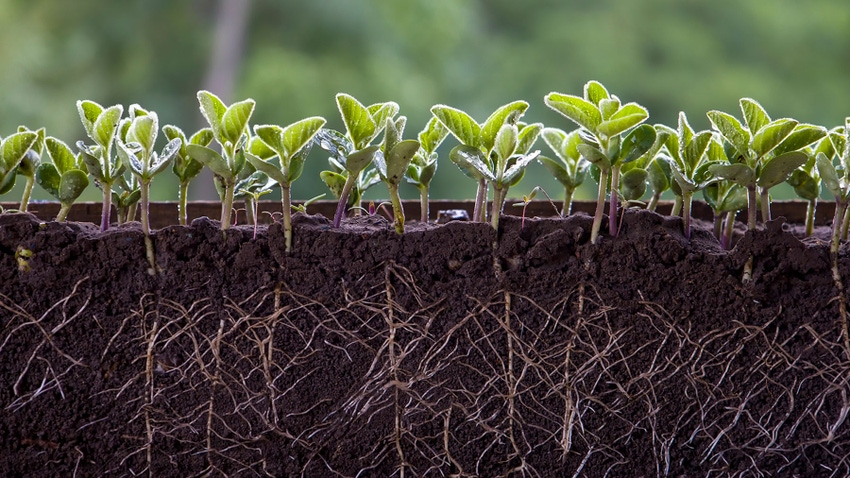
Pablo Sobron was building technology for Mars and moon missions when he asked the question: Are there any other places on Earth that we have not explored?
“Soil is one I consider a final frontier,” the founder of Impossible Sensing, a technology company for space exploration that recently ventured into tackling climate change, said during AgTech Next at the Danforth Center in St. Louis.
Sobron is just one scientist searching for tools to help farmers understand what lies beneath the soil’s surface without all the digging. But farmers will need to embrace the out-of-this-world thinking and technology by these scientists to truly see their plant and soil structure.
Search the stars
After spending years developing technology for space, Sobron is now making an impact not only on other worlds, but also on Earth as well.
“I began looking at how I can bring the space tech into looking at soil,” he said. “We set up the company to learn and take these requirements to work in extreme space environments and utilize that tech as a feature, as a novelty, as an enabler to do precise soil science at scale.”
The result is automated, low-cost, rugged, highly sensitive instruments to fill the gap in soil measurements.
These made-in-space instruments replace soil coring and off-site analysis with on-site measurements of soil properties, including organic carbon and other health indicators. It resembles a small black barrel with a hand-held wand.
In 2022, Impossible Sensing received a $1.6 million investment from the Department of Energy to demonstrate its technology. When it becomes commercial, customers will receive the soil-quality insights they need to implement soil management practices that strengthen yields, soil health and resilience.
The company’s collaboration with John Deere in its 2023 Startup Collaborator program has already proven the tech’s feasibility and potential it holds.
For Sobron, the system developed by Impossible Sensing will also provide quantitative validation for carbon-credit markets and climate-smart agriculture practices such as cover crops, no-till and crop rotation.
Impossible Sensing has teamed up with BioGenerator, aiming to catapult its technology into the market by 2025.
Back on the ground
Vasit Sagan is a geospatial scientist. “I study physics, the science behind remote sensing. How light interacts with plants and the terrain, then how do we measure that to help predict plant health, productivity,” the deputy director of Taylor Geospatial Institute explained.
With imagery-sensing datasets, he is able to predict yield, for example, at global scale from early-season datasets — along with seed composition, seed quality, meal content, and nitrogen and water deficiencies.
There are two main types of sensors.
Passive sensors rely on either sunlight, reflected solar energy or emitted thermal image energy to bounce off a target to produce a response. They include a spectrometer or hyperspectral radiometer. A common example of a passive sensor in agriculture is Landsat.
Active sensors direct their signal to the object and then check the response back. These include radar or LiDAR.
One active sensor Sagan said will be a game-changer for agriculture is ground-penetrating radar. “It can penetrate, in theory, up to 7 meters down the soil,” he explained. “That allows us to map underground phenotypic traits, like root architecture.”
There are other soil sensors as well, known as proximal sensing, that offer insight into soil health, nutrients and water content.
Get the whole soil picture
When scientists combine all the sensor data, they can provide farmers with a better understanding of what's happening belowground. Sagan said it can be as specific as how much carbon is being sequestered or absorbed, stored in the root system — or estimates of biomass, yield and plant height.
Ultimately, the world of remote sensing is bringing more data to help farmers make better decisions for their operation’s sustainability.
“We have a whole suite of technology that can tell us information from not just belowground but aboveground,” Sagan said. “We can link those two together and understand how crops respond to various environmental conditions.”
The journey to unearthing plant and soil structure and productivity is neither simple nor quick. Scientists, like Sobron and Sagan, continue to push beyond the horizon searching for the next frontier to explore and bring back new technology that offers solutions to challenges farmers face in crop production.
About the Author(s)
You May Also Like






